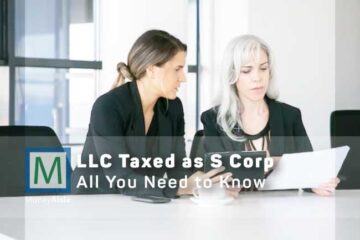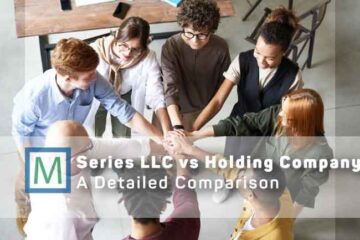There are several different types of business structures that are important to understand and choose when starting a company. Choosing the right type of structure can make a big difference in how much you pay in taxes, what type of legal protections the business has, and who owns the company.
Choose the Best Legal Structure For Your Business: Like many business owners, you may be wondering what type of legal structure is best for your business. This article will talk about the salient features, advantages, disadvantages, and formation requirements of the 4 most common legal business structures in the USA. That is:
Selecting a business structure is the first step that new business owners must complete. Making the right business structure decisions can impact your tax and compliance obligations. But it’s become perplexing when presented with a wide range of options with similar sounds.
How can you compare organizational structures and choose the best one? Well, this guide will help you choose the best legal structure for your business. We compared 4 types of business structures commonly adopted in the USA and tried to address the following aspects:
- Formation and compliance requirements
- Personal asset protection
- Tax advantages
- Funding and financing opportunities
So, before you finish reading, we are confident that you will have adequate information about the 4 most common types of business structure and can choose the best legal structure for your business.

What is Legal Structure in Business?
The business legal structure is often called a business entity or business ownership structure.
It is a government classification that controls specific elements of your business. From tax deductions to risk exposures in the events of lawsuits and debts, business legal structure plays an important role.
Generally, the legal structure of your business determines the tax burden on you at the federal level. Whereas on the state level, the consequences of the legal structure of your business may appear in the form of liability.
That is why choosing the best business structure is one of the key elements in your business success.
4 Types of Business Legal Structures (Detailed Overview)
Now let’s discuss the four most popular business legal structures in the context of tax structure, liability protection, and formation issues.
In the USA, the 4 most common legal structures for business are:
1. Sole Proprietorship
If a person starts a business in the USA, by default the business structure will be a sole proprietorship. It is a business entity where the owner and the companies are the same in terms of the law.
The sole proprietorship is the most typical legal structure for small businesses as you do not need to fulfill special formation requirements. Here are some advantages and disadvantages of a sole proprietorship:
Taxation
In sole proprietorships, the business is taxed as a pass-through tax entity. The company does not submit a tax return. Instead, a Schedule C is used to declare the revenue (or loss) on the owner’s tax return (Form 1040).
Liability Protection
Since there is no legal distinction between the owners and the company, the sole proprietorship owner is entirely responsible for any obligations that the company faces. So, the personal assets of the owners are always at the risk.
However, sound contracts and insurance can help you reduce the personal liability risk.
Formation
The simplest business structure is a sole proprietorship. A sole proprietorship hardly needs any paperwork. There is no state filing obligation in this legal business structure.
You just need to fulfill license requirements (if any) and you are all set to go. In short, a sole proprietorship can be formed for little money and does not require heaps of paperwork.
2. General Partnership
A general partnership is almost like a solo proprietorship but has more than one owner. It is a partnership of two or more business owners looking to make a profit.
General partnerships can be formed with minimum formality and need no state filings. However, it is advisable to draft a partnership agreement to avoid any sour situation because there will be multiple parties.
A partnership agreement is a company’s internal document that outlines the conditions of the partnership. Usually, it formalizes the rules for profit- and loss-sharing, ownership proportions, dissolution terms, and management rights.
Below are stated some advantages and disadvantages of general partnerships:
Taxes
A partnership is a business entity that reports taxes but does not pay federal taxes. It must submit an annual information return (Form 1065) with the IRS to disclose earnings and losses from business operations and activities.
Based on the owners’ profit-sharing percentages specified in the Partnership Agreement, profits and losses are passed through the owners. Hence there is no separate taxation applied directly to the company.
Liability Protection
Having unlimited liability risk is one of the biggest pitfalls of general partnerships. Owners are often personally liable indefinitely. Each partner is jointly responsible for the obligations of the company run under the general partnership structure.
Hence, in the personal liability aspect, a general partnership is worse than a sole proprietorship where you are only responsible for your own negligence. In a general partnership, your personal assets are at risk due to the negligence of a partner.
Formation
There is no need to register a general partnership with the state. So, no headaches related to the formation of documents or the filing process. Moreover, you are not legally required to adopt a written agreement or have a contract while forming a general partnership.
Many people take help from an attorney to draft a partnership agreement but it is straightforward to draft using online templates.
While drafting a partnership agreement, you need to focus on the following topics:
- Capital Investments,
- Profit/loss distributions,
- Roles and responsibilities,
- Banking,
- Debt management,
- Accounting and bookkeeping,
- Business termination.
Hence, having a partnership agreement saves you from any potential conflict or misunderstanding as everything is predetermined and written.
3. Limited Liability Company (LLC)
An LLC offers the features of a sole proprietorship, a corporation, and a general partnership. It is the most flexible legal business structure combining the advantages of all other entities in a single business structure.
Due to these characteristics of a limited liability company, it is the most popular entity structure among business owners.
Unlike an S corporation or sole proprietorship, an LLC has no restrictions on the number or citizenship of the owners. An LLC can have only one owner aka member or as many members as the LLC wants. LLC owners can be individuals, businesses, other LLCs, and international entities.
Some of the advantages and disadvantages are written below:
Taxation
LLC offers the most flexibility in terms of taxes. It can elect to file taxes as a pass-through entity or as a corporation. Moreover, LLCs can write off taxes and save a handsome amount.
Generally, an LLC reports its taxes as a “pass-through entity.” This implies that business income is distributed to LLC members through the LLC, who then record their respective gains or losses on their individual income tax returns.
Just like general partnerships, LLCs are needed to submit only an informative tax return. To report the taxes, single-member LLCs use Form 1040 Schedule C, E, or F while multi-member LLCs use partnership return Form 1065 to report their taxes.
Liability Protection
The limited liability feature of an LLC protects LLC members from being held personally liable for business debts and claims. It means if an LLC is sued or owes money, the creditors can’t claim the personal assets of LLC members. Only the business’s assets are at risk.
However, if the LLC members are involved in any fraud or unlawful activity, the personal assets of LLC members can be at risk. To avoid “piercing the corporate veil,” LLC members should remain cautious (not mix personal bank accounts with business accounts).
Formation
To create an LLC, you must file LLC articles of organization with the state authorities usually the secretary of state. You also need to pay an LLC filing fee ranging from $100 to $800 to the state.
Moreover, LLCs are strongly advised to adopt an operating agreement that sets out rules for the ownership and operation of the business. Though most states do not require LLCs to officially adopt LLC operating agreement, having one will save you from potential conflicts in difficult situations.
Typical clauses in an operating agreement are:
- Capital contribution of each member
- Obligations and rights of each member
- Voting rights
- Buy-Sell provision
- Profits and losses allocation
- Management structure
- What happens if a member leaves the company
- LLC dissolution
Read our complete article about 3 must-have LLC formation documents for more information.
4. Corporation
A corporation is the most complex business legal structure that separates its owners from the business. Since a corporation is a separate legal entity, it can enter into contracts and pays taxes separately from its owners aka shareholders.
S corporations and C corporations are the most common types of a corporation. The major difference between these two types is how they are taxed. Let’s have a look at some of the advantages and disadvantages of a corporation:
Taxes
Corporations are either taxed as “C corporations” or “S corporations,” The income of a C corporation is subjected to both corporate income tax and personal income tax. C corporations submit a tax return (Form 1120) to pay corporate tax and shareholders pay their individual federal income tax. Hence, C-corps are subjected to “double taxation.
S corporations on the other hand do not pay corporate tax since business income is passed to shareholders’ tax returns. However, using Form 1120S, the S corporations are required to report income, losses, deductions, gains, credit, etc., to IRS.
Liability Protection
Just like LLCs, the corporation’s shareholders have limited liability protection. Hence, if the corporation faces debts or lawsuits, the personal asset of shareholders are protected unless there is a breach in the corporate veil.
Formation
In order to legally operate and form a corporation, you must file Articles of Incorporation with the state authorities where you intend to conduct your business. Moreover, all states require a corporation to adopt corporation bylaws which are similar to an LLC operating agreement.
Depending on the state you incorporate in, corporations may have slightly more complicated recordkeeping and reporting obligations than LLCs. Corporations must have regular shareholders’ meetings and record meeting minutes.
The management structure is also more complex than the LLC management structure. However, corporations are immortal business entities that are not dissolved or terminated when any of the owners die or leave the company.
Transferring corporate shares from one individual to another is simple and securing outside funding is very easy with the corporation. A corporation usually attracts investors by selling their stocks while LLCs have to look for other funding sources such as LLC business loans.
How to Choose the Best Legal Business Structure
A specific legal business structure offers several benefits in a particular context. Choosing a particular business entity will affect how much control you have over your company, your personal liability, how easy it is to raise money, and how much paperwork you have to do.
So, let’s discuss some of the important features that will help you decide the best legal business structure for your business.
Taxes
Owners of S corporations, partnerships, and sole proprietorships classify their business revenue as personal income. So, in such cases, the taxes are passed through the owners’ personal income.
On the other hand, a C corporation’s income is corporate income distinct from an owner’s income. Therefore, the c corporations face double taxation, one on the corporate level and one on the owners’ level.
Because business and personal income are taxed at different rates, your chosen structure could significantly impact your tax liability. So, if you want to save money on taxes, choose a structure that offers maximum tax flexibility and benefits.
Liability Protection
In case of a lawsuit, a limited liability shield of certain legal structures such as corporations, LLCs, and LLPs can protect your personal assets. However, if a sole proprietorship or general partnership faces a lawsuit or is unable to pay its debts, the owner’s personal assets will be used to resolve such issues.
That is why many entrepreneurs and business owners prefer incorporated businesses (corporations, LLCs, and LLPs) over unincorporated businesses (sole proprietorships and general partnerships).
Registration
To start your business under some legal business structures, you need to register your business with the state. Corporations, LLCs, and LLPs are the company structures that are formally recognized by your state of incorporation.
So, you need to file the specific formation documents with the state along with the filing fee. On the other hand, sole proprietorships and general partnerships are the default business entities that do not need the registration process.
So, you can save the filing fee and do not have to deal with the hassles of the registration process and papers.
Important:
If you are avoiding your business incorporation just because you don’t want to deal with the tiring registration process, think again. Do not turn down the other perks just because of the fear of filing the wrong documents or the pain of dealing with legal documents.
Hire professional services to register your business at a fraction of the cost. Hence you will enjoy liability protection, tax flexibility, and other advantages without dealing with any burden of the filing process.
Please note that some of the filings such as employer identification number (EIN) or specific licenses and permissions are universal to all legal business structures. Such requirements depend on the number of employees you have and the nature of your business.
Paperwork and Ongoing Compliance Requirements
Some business structures need regular filings with the state. For example, many states require LLCs and corporations to submit annual/biennial reports while sole proprietorships, LLPs, and general partnerships do not have to deal with such headaches.
Moreover, a corporate structure necessitates holding regular shareholders’ meetings and recording the meeting minutes. While other legal business structures do not have such bindings.
Incorporated businesses have to deal with certain SOPs and paperwork when a member leaves the business or in the event of business termination.
That is why some states also made it obligatory for corporations and LLCs to adopt an operating agreement (by laws of the company) to avoid any confusion or complication at the time of business dissolution or passing/leaving a partner.
Management Structure
Unincorporated business entities do not have any complex management structure. Even LLCs have very flexible management requirements. But in the case of corporations, there must be a board of directors, and this board must meet a predetermined number of times annually in some states.
Corporate hierarchies also stop a company from closing down when a founder passes away, an owner transfers shares, or the company quits. This closing protection is absent from other business entities.
Financing and Funding Opportunities
Certain methods of fundraising may be prohibited by some organizational structures. For instance, sole proprietorships typically aren’t permitted to market stocks. Similarly, an S corp can only issue one class of stocks.
Raising capital and attracting investors is easy in a C corporation compared to other legal structures of business. Generally, incorporated legal entities hold more credibility with funding and financing institutions.
So, it is easier to secure loans and funding for LLCs and LLPs compared to sole proprietorships and general partnerships.
Conclusion
We hope that by now you have a better understanding of the four most common types of business structures and which legal structure will be the best fit for your business. Each type of structure has its own benefits and drawbacks, so it’s important to choose the one that works best for your unique situation.

Lyle Solomon has considerable litigation experience as well as substantial hands-on knowledge and expertise in legal analysis and writing. Since 2003, he has been a member of the State Bar of California. In 1998, he graduated from the University of the Pacific’s McGeorge School of Law in Sacramento, California, and now serves as a principal attorney for the Oak View Law Group in California. He has contributed to publications such as Entrepreneur, All Business, US Chamber, Finance Magnates, Next Avenue, and many more.







